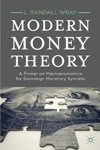By Matthew Berg and Brian Hartley, Ph.D. students
University of Missouri-Kansas City
Summary
We find that the correlation between government debt-to-GDP ratios and future growth in Reinhart and Rogoff’s (2010a and and 2010b) dataset results from outliers which come from the country most suggestive of the hypothesis that slow growth causes high levels of government debt – Japan. This evidence strengthens and reinforces criticisms recently made by Herndon, Ash, and Pollin (2013) of research suggesting a negative relationship between government debt-to-GDP ratios and real GDP growth rates. As Reinhart and Rogoff (2013) recently and quite correctly noted, “the frontier question for research is the issue of causality.” We join Reinhart and Rogoff’s call for more research illuminating this important question. To that end, we use Reinhart’s and Rogoff’s dataset, as corrected by Herndon, Ash, and Pollin (2013). Following and reinforcing Dube (2013) and Basu (2013), we use LOWESS regressions and distributed lag models and find evidence suggesting that correlation of government debt-to-GDP ratios and future growth are much more likely explained by “reverse” causation running from slow GDP growth to high government debt-to-GDP ratios than by “forward” causation running from high government debt-to-GDP ratios to slow growth. Furthermore, what little evidence there is for forward causation appears to stem almost entirely from Japanese outliers. Because – as economists generally recognize – Japan is the clearest of all cases of reverse causation, this considerably weakens the argument for forward causation. In addition, we find tremendous heterogeneity on the level of individual countries in the relationship between current government debt-to-GDP ratios and future growth. This suggests that even if substantial evidence for forward causation is eventually discovered in cross-country studies, the effect will likely be small in size and unreliable, and therefore not relevant to economic policy decisions in any particular individual country. Our findings are suggestive, but not conclusive, and more research is needed. We suggest that simultaneous equations models may offer a way forward on the “frontier question” of causality. Continue reading











